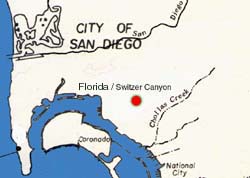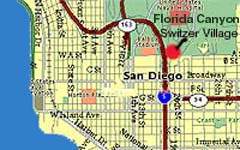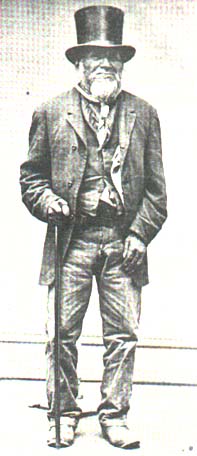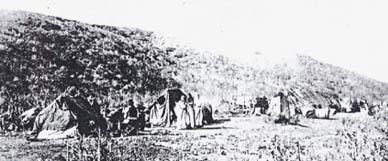|
CAPITAN JOSE MANUEL HATAM
Earliest European accounts acknowledge the continuous occupation by tribal
people all along the coast of California and inland of this area we now
call San Diego. Specifically Lt. Pedro Fages, Who enforced policy and
defended Father Junipero Serra reported established Kumeyaay villages
at the mouth of the Tijuana, Sweetwater and Choyas rivers. Then, as now,
the Kumeyaay tribal band structure lends itself to many human scale patterns
of settlement. Often times these villages or rancherias or shiimull are
structured to maintain harmony and balance. Before there were Euro-American
settlements of the: Royal Presidio, Misson San Diego de Alcala, Old Town,
Newtown, Mission Valley, National City or Balboa Park, Kumeyaay tribal
people occupied every valley and stream. Water is life in San Diego. There
were over twenty Kumeyaay villages within sight of the Presidio.
Just South of the Presidio or what became Newtown is Indian Point. It
is not unusual for local tribal people to be able to call upon oral custom
and tradition and recognize direct ancestors and specific village locations
in this San Diego area of over 800 years. Indian Point, we now list historically,
as the 'property' of Middletown and Newtown. These areas were part of
the Pueblo land purchased from the City after 1850 for real estate investments.
Tribal people from Kumeyaay villages bordering Middletown and Newtown
provided a major source for labor thoughout development then and into
modern times. This is a pattern repeated in other California cities along
the coastal areas. From 1860 to 1890 a large Kumeyaay village is acknowledged
to have occupied the mesas and canyons east of Russ School, near 18th
and 'B' streets. Also, one of the best documented villages is the Switzer
canyon, or now Florida canyon Kumeyaay band village. In the area where
19th and 20th streets intersect 'A' and 'B' streets signs of the long
occupation are still found. E. D. Switzer moved there in 1869. His daughter
remembered "an Indian rancheria about a quarter of a mile north of our
place in the canyon."
 |
 |
These Kumeyaay villages are often dismissed, then and now, due to cultural
perceptions of acceptable habitat. Most notably is the sharp contrast
of 'gingerbread' Victorian style to the traditional summer habitat of
willow and other natural materials, the Kumeyaay Awa. From about 1860,
possibly earlier, the Capitan or spokesman of this Florida canyon Kumeyaay
village is Manuel Hatam. His Roman Catholic baptismal name is, Jose
Manuel Pol-ton. He is born in 1805 (apx). at Santa Catarina. He resided
with his daughter at the Florida Canyon, City Park/Balboa Park Kumeyaay
village location until his death in 1875. He served as Capitan for over
fifteen years. As a young boy, Manuel was sent from his home, along with
ten boys from Descanso and ten from his home at Santa Catarina, to Los
Angeles by Padre Feliz of the Santa Catarina mission to work in the employ
of Don Delores Sepulveda as Vaquero or cowman. There was a smallpox epidemic
in late 1862 and early 1863 and many persons fled the Los Angeles area.
Manuel Hatam left for San Diego. His Kumeyaay community and San Diegans
were receptive to his leadership. The non-Indian population recalls his
tenure, style, oratory and personal dress with warm reminiscences in many
articles that appeared in the San Diego Union. Often described as a model
chieftain/Capitan, he earned the respect of both non-Indian and tribal
residents. After his death in 1875, he was succeeded by Juan Gonzales.
Capitan Gonzales and his spouse Ysabel also resided at the Florida canyon
village until his death in 1890.
This author acknowledges thanks and much credit to Susan Hunter C.
|


